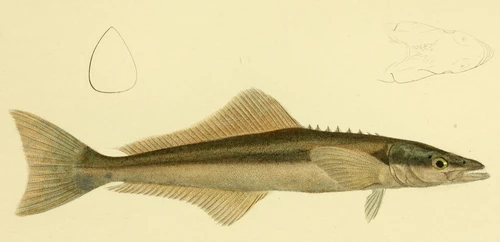Information
Author: Maria Filipa Castanheira
Version: B | 1.2Published: 2024-12-31
- minor editorial changes plus new side note "Commercial relevance"
WelfareScore | farm
The score card gives our welfare assessments for aquatic species in 10 criteria.
For each criterion, we score the probability to experience good welfare under minimal farming conditions ("Likelihood") and under high-standard farming conditions ("Potential") representing the worst and best case scenario. The third dimension scores how certain we are of our assessments based on the number and quality of sources we found ("Certainty").
The WelfareScore sums just the "High" scores in each dimension. Although good welfare ("High") seems not possible in some criteria, there could be at least a potential improvement from low to medium welfare (indicated by ➚ and the number of criteria).
- Li = Likelihood that the individuals of the species experience good welfare under minimal farming conditions
- Po = Potential of the individuals of the species to experience good welfare under high-standard farming conditions
➚ = potential improvements not reaching "High" - Ce = Certainty of our findings in Likelihood and Potential
WelfareScore = Sum of criteria scoring "High" (max. 10 per dimension)
General remarks
Rachycentron canadum is a migratory PELAGIC species widely distributed in subtropical, tropical, and temperate areas, except for the central and eastern Pacific. Several biological attributes make R. canadum a strong candidate for aquaculture, such as rapid growth, high fillet quality, and high market price. However, many aspects of welfare in rearing conditions have not been addressed yet. In order to optimise fish welfare of this species, improvements in current harvesting practices are needed to meet depth range needs, reproduction without manipulation, aggregation, aggression, and stress reduction.
1 Home range
Many species traverse in a limited horizontal space (even if just for a certain period of time per year); the home range may be described as a species' understanding of its environment (i.e., its cognitive map) for the most important resources it needs access to.
What is the probability of providing the species' whole home range in captivity?
It is unclear for minimal and high-standard farming conditions. Our conclusion is based on a medium amount of evidence.


2 Depth range
Given the availability of resources (food, shelter) or the need to avoid predators, species spend their time within a certain depth range.
What is the probability of providing the species' whole depth range in captivity?
It is low for minimal farming conditions. It is medium for high-standard farming conditions. Our conclusion is based on a high amount of evidence.


3 Migration
Some species undergo seasonal changes of environments for different purposes (feeding, spawning, etc.), and to move there, they migrate for more or less extensive distances.
What is the probability of providing farming conditions that are compatible with the migrating or habitat-changing behaviour of the species?
It is low for minimal farming conditions. It is medium for high-standard farming conditions. Our conclusion is based on a medium amount of evidence.


4 Reproduction
A species reproduces at a certain age, season, and sex ratio and possibly involving courtship rituals.
What is the probability of the species reproducing naturally in captivity without manipulation of these circumstances?
It is low for minimal farming conditions. It is medium for high-standard farming conditions. Our conclusion is based on a medium amount of evidence.


5 Aggregation
Species differ in the way they co-exist with conspecifics or other species from being solitary to aggregating unstructured, casually roaming in shoals or closely coordinating in schools of varying densities.
What is the probability of providing farming conditions that are compatible with the aggregation behaviour of the species?
It is low for minimal and high-standard farming conditions. Our conclusion is based on a medium amount of evidence.


6 Aggression
There is a range of adverse reactions in species, spanning from being relatively indifferent towards others to defending valuable resources (e.g., food, territory, mates) to actively attacking opponents.
What is the probability of the species being non-aggressive and non-territorial in captivity?
It is low for minimal farming conditions. It is medium for high-standard farming conditions. Our conclusion is based on a medium amount of evidence.


7 Substrate
Depending on where in the water column the species lives, it differs in interacting with or relying on various substrates for feeding or covering purposes (e.g., plants, rocks and stones, sand and mud, turbidity).
What is the probability of providing the species' substrate and shelter needs in captivity?
It is low for minimal farming conditions. It is high for high-standard farming conditions. Our conclusion is based on a medium amount of evidence.


8 Stress
Farming involves subjecting the species to diverse procedures (e.g., handling, air exposure, short-term confinement, short-term crowding, transport), sudden parameter changes or repeated disturbances (e.g., husbandry, size-grading).
What is the probability of the species not being stressed?
It is low for minimal farming conditions. It is medium for high-standard farming conditions. Our conclusion is based on a medium amount of evidence.


9 Malformations
Deformities that – in contrast to diseases – are commonly irreversible may indicate sub-optimal rearing conditions (e.g., mechanical stress during hatching and rearing, environmental factors unless mentioned in crit. 3, aquatic pollutants, nutritional deficiencies) or a general incompatibility of the species with being farmed.
What is the probability of the species being malformed rarely?
It is low for minimal farming conditions. It is medium for high-standard farming conditions. Our conclusion is based on a low amount of evidence.


10 Slaughter
The cornerstone for a humane treatment is that slaughter a) immediately follows stunning (i.e., while the individual is unconscious), b) happens according to a clear and reproducible set of instructions verified under farming conditions, and c) avoids pain, suffering, and distress.
What is the probability of the species being slaughtered according to a humane slaughter protocol?
It is low for minimal farming conditions. It is medium for high-standard farming conditions. Our conclusion is based on a medium amount of evidence.


Side note: Domestication
Teletchea and Fontaine introduced 5 domestication levels illustrating how far species are from having their life cycle closed in captivity without wild input, how long they have been reared in captivity, and whether breeding programmes are in place.
What is the species’ domestication level?
DOMESTICATION LEVEL 4 46, level 5 being fully domesticated.
Side note: Forage fish in the feed
450-1,000 milliard wild-caught fishes end up being processed into fish meal and fish oil each year which contributes to overfishing and represents enormous suffering. There is a broad range of feeding types within species reared in captivity.
To what degree may fish meal and fish oil based on forage fish be replaced by non-forage fishery components (e.g., poultry blood meal) or sustainable sources (e.g., soybean cake)?
All age classes: WILD: carnivorous 9 47. FARM: fish meal and fish oil may be partly* replaced by non-forage fishery components 48 49 50 51 52.
*partly = <51% – mostly = 51-99% – completely = 100%
Side note: Commercial relevance
How much is this species farmed annually?
48,163 t/year 1990-2019 amounting to estimated 6,000,000-8,000,000 IND/year 1990-2019 53.
Glossary
DOMESTICATION LEVEL 4 = entire life cycle closed in captivity without wild inputs 46
EURYHALINE = tolerant of a wide range of salinities
FARM = setting in farming environment or under conditions simulating farming environment in terms of size of facility or number of individuals
FINGERLINGS = early juveniles with fully developed scales and working fins, the size of a human finger
IND = individuals
JUVENILES = fully developed but immature individuals
LAB = setting in laboratory environment
LARVAE = hatching to mouth opening
OCEANODROMOUS = living and migrating in the sea
PELAGIC = living independent of bottom and shore of a body of water
PHOTOPERIOD = duration of daylight
RAS = Recirculating Aquaculture System - almost completely closed system using filters to clean and recirculate water with the aim of reducing water input and with the advantage of enabling close control of environmental parameters to maintain high water quality
SPAWNERS = adults during the spawning season; in farms: adults that are kept as broodstock
WILD = setting in the wild
Bibliography
2 Benetti, Daniel D., Mehmet R. Orhun, Bruno Sardenberg, Brian O’Hanlon, Aaron Welch, Ronald Hoenig, Ian Zink, et al. 2008. Advances in hatchery and grow-out technology of cobia Rachycentron canadum (Linnaeus). Aquaculture Research 39: 701–711. https://doi.org/10.1111/j.1365-2109.2008.01922.x.
3 Liao, I Chiu, Ting-Shih Huang, Wann-Sheng Tsai, Cheng-Ming Hsueh, Su-Lean Chang, and Eduardo M Leaño. 2004. Cobia culture in Taiwan: current status and problems. Aquaculture 237: 155–165. https://doi.org/10.1016/j.aquaculture.2004.03.007.
4 Benetti, D., M. R. Orhun, I. C. Zink, F. G. Cavalin, B. Sardenberg, K. Palmer, B. Denlinger, D. Bacoat, and B. O’Hanlon. 2010. Growth rates of cobia (Rachycentron canadum) cultured in open ocean submerged cages in the Caribbean. Aquaculture 302: 195–201. https://doi.org/http://dx.doi.org/10.1016/j.aquaculture.2010.02.021.
5 Nhu, Van Can, Huy Quang Nguyen, Thanh Luu Le, Mai Thien Tran, Patrick Sorgeloos, Kristof Dierckens, Helge Reinertsen, Elin Kjørsvik, and Niels Svennevig. 2011. Cobia Rachycentron canadum aquaculture in Vietnam: Recent developments and prospects. Aquaculture 315. Larvi 2009: 20–25. https://doi.org/10.1016/j.aquaculture.2010.07.024.
6 Arnold, Connie R., Jeffrey B. Kaiser, and G. Joan Holt. 2002. Spawning of Cobia Rachycentron canadum in Captivity. Journal of the World Aquaculture Society 33: 205–208. https://doi.org/10.1111/j.1749-7345.2002.tb00496.x.
7 Shaffer, Rosalie Vaught, and Eugene L. Nakamura. 1989. Synopsis of biological data on the cobia Rachycentron canadum (Pisces: Rachycentridae). U.S. Dept. of Commerce, National Oceanic and Atmospheric Administration, National Marine Fisheries Service.
8 Richards, C. E. 1977. Cobia (Rachycentron canadum) tagging within Chesapeake Bay and updating of growth equations. Chesapeake Science 18: 310–311. https://doi.org/10.2307/1350806.
9 Smith, Jospeh W. 1995. Life History of Cobia (Osteichthyes: Rachycentridae), in North Carolina Waters. Brimleyana 23: 1–23.
10 South Carolina Marine Resources Research Institute. 1995. Unpublished data. Charleston, South Carolina.
11 Springer, S., and H.R. Bullis. 1956. Collections by the Oregon in the Gulf of Mexico: list of crustaceans, mollusks, and fishes identified from collections made by the exploratory fishing vessel Oregon in the Gulf of Mexico and adjacent seas 1950 through 1955 /. Washington, D.C. :
12 Mclean, E., G. Salze, M. H. Schwarz, and S. R. Craig. 2009. Cobia cultivation in aquaculture. In New Technologies in Aquaculture, ed. Gavin Burnell and Geoff Allan, 804–821. Woodhead Publishing Series in Food Science, Technology and Nutrition. Woodhead Publishing. https://doi.org/10.1533/9781845696474.5.804.
13 Joseph, Edwin B., John J. Norcross, and William H. Massmann. 1964. Spawning of the cobia, Rachycentron canadum, in the Chesapeake Bay area, with observations of juvenile specimens. Chesapeake Science 5: 67–71. https://doi.org/10.2307/1350791.
14 Carvalho Filho, A. 1999. Peixes: Costa Brasileira. 3rd ed. São Paulo: Editora Melro Ltda.
15 Figueiredo, J.L., and N.A. Menezes. 2000. Manual de peixes marinhos do Sudeste do Brasil. VI. Teleostei. São Paulo: Museu de Zoologia, USP 1.
16 Riede, K. 2004. Global register of migratory species - from global to regional scales. Final report of the R&D Projekt 808 05 081. Bonn, Germany: Federal Agency for Nature Conservation.
17 Lefebvre, Lyndsey S., and Michael R. Denson. 2012. Inshore spawning of cobia (Rachycentron canadum) in South Carolina. Fishery Bulletin 110: 397–412.
18 Richards, C. E. 1967. Age, Growth and Fecundity of the Cobia, Rachycentron canadum, from Chesapeake Bay and Adjacent Mid-Atlantic Waters. Transactions of the American Fisheries Society 96: 343–350. https://doi.org/10.1577/1548-8659(1967)96[343:AGAFOT]2.0.CO;2.
19 Feitoza, M., R. S. Rosa, and L.A. Rocha. 2005. Ecology and Zoogeography of Deep-Reef Fishes in Northeastern Brazil. Bulletin of Marine Science 76: 725–742.
20 Bryan, D. R., K. Kilfoyle, R. G. Gilmore, and R. E. Spieler. 2012. Characterization of the mesophotic reef fish community in south Florida, USA. Journal of Applied Ichthyology 29: 108–117. https://doi.org/10.1111/j.1439-0426.2012.02055.x.
21 Biesiot, Patricia M., Robert E. Caylor, and James S. Franks. 1994. Biochemical and Histological Changes During Ovarian Development of Cobia, Rachycentron Canadum, from the Northern Gulf of Mexico. Fishery Bulletin 92: 686–696.
22 Brown-Peterson, Nancy J., Robin M. Overstreet, Jeffrey M. Lotz, James S. Franks, and Karen M. Burns. 2001. Reproductive Biology of Cobia, Rachycentron canadum, from Coastal Waters of the Southern United States. Fishery Bulletin 99: 15.
23 Rickards, W.L. 2000. Sustainable Cobia Culture and Fisheries. Vol. VSG-01-07. Charlottesville, Virginia: Virginia Sea Grant Publication.
24 Kilduff, P., W. DuPaul, M. Oesterling, J. Jr. Olney, and J. Tellock. 2002. Induced tank spawning of cobia, Rachycentron canadum, and early larval husbandry. World Aquaculture 33: 35–39.
25 Caylor, Robert E, Patricia M Biesiot, and James S Franks. 1994. Culture of cobia (Rachycentron canadum): cryopreservation of sperm and induced spawning. Aquaculture 125: 81–92. https://doi.org/10.1016/0044-8486(94)90285-2.
26 Benson, Norman Gustaf. 1982. Life History Requirements of Selected Finfish and Shellfish in Mississippi Sound and Adjacent Areas. Fish and Wildlife Service.
27 Faulk, Cynthia K., Jeffrey B. Kaiser, and G. Joan Holt. 2007. Growth and survival of larval and juvenile cobia Rachycentron canadum in a recirculating raceway system. Aquaculture 270: 149–157. https://doi.org/10.1016/j.aquaculture.2007.03.029.
28 Salze, G., E. McLean, M. H. Schwarz, and S. R. Craig. 2008. Dietary mannan oligosaccharide enhances salinity tolerance and gut development of larval cobia. Aquaculture 274: 148–152. https://doi.org/10.1016/j.aquaculture.2007.11.008.
29 Holt, G. Joan, J. Kaiser, and C. Faulk. 2007. Advances in Cobia Research in Texas. In Cobia Aquaculture: Research, Development and Commercial Production. New Orleans, La, USA: Liao and Leano, Eds World Aquaculture Society.
30 Webb, Kenneth A., Glenn M. Hitzfelder, Cynthia K. Faulk, and G. Joan Holt. 2007. Growth of juvenile cobia, Rachycentron canadum, at three different densities in a recirculating aquaculture system. Aquaculture 264: 223–227. https://doi.org/10.1016/j.aquaculture.2006.12.029.
31 Costa-Bomfim, C. N., W. V. N. Pessoa, R. L. M. Oliveira, J. L. Farias, E. C. Domingues, S. Hamilton, and R. O. Cavalli. 2014. The effect of feeding frequency on growth performance of juvenile cobia, Rachycentron canadum (Linnaeus, 1766). Journal of Applied Ichthyology 30: 135–139. https://doi.org/10.1111/jai.12339.
32 Weirich, Charles R., Alvin D. Stokes, Theodore I. J. Smith, Wallace E. Jenkins, and Michael R. Denson. 2006. Outdoor Tank and Pond Spawning of Cobia, Rachycentron canadumin Coastal South Carolina. Journal of Applied Aquaculture 18: 1–16. https://doi.org/10.1300/J028v18n03_01.
33 Kaiser, J. B. 2004. Personal communication.
34 Cnaani, Avner, and Ewen McLean. 2009. Time-course response of cobia (Rachycentron canadum) to acute stress. Aquaculture 289: 140–142. https://doi.org/10.1016/j.aquaculture.2008.12.016.
35 Trushenski, J., M. Schwarz, R. Takeuchi, B. Delbos, and L. A. Sampaio. 2010. Physiological responses of cobia Rachycentron canadum following exposure to low water and air exposure stress challenges. Aquaculture 307: 173–177. https://doi.org/10.1016/j.aquaculture.2010.07.015.
36 Rodrigues, Ricardo Vieira, Janaína dos Santos Pedron, Luis Alberto Romano, Marcelo Borges Tesser, and Luís André Sampaio. 2015. Acute responses of juvenile cobia Rachycentron canadum (Linnaeus 1766) to acid stress. Aquaculture Research 46: 1241–1247. https://doi.org/10.1111/are.12282.
37 Pedron, Janaína S., Denise S. Miron, Ricardo V. Rodrigues, and Marcelo H. Okamoto. 2016. Stress response in transport of juvenile cobia Rachycentron canadum using the anesthetic benzocaine. Latin American Journal of Aquatic Research 44: 638–642.
38 Chu, Kua Beng, Azila Abdulah, Siti Zahrah Abdullah, and Ramley Abu Bakar. 2013. A Case Study on the Mortality of Cobia (Rachycentron canadum) Cultured in Traditional Cages. Tropical Life Sciences Research 24: 77–84.
39 Moraes, J.R.E., J.R. Engracia Filho, F.R. de Moraes, C.E. Kerber, B. Plastina, and M. Shimada. 2013. Deformities in reared cobia, Rachycentron canadum L. and grouper, Epinephelus marginatus, in Sao Paulo state coast, Brazil. In Aquaculture Europe 2013. Trondheim, Norway.
40 Dutney, Luke. 2016. Reproductive Biology and Controlled Reproductive Development of Captive Cobia (Rachycentron canadum). Doctor of Philosophy, Sippy Downs, QLD, Australia: University of the Sunshine Coast.
41 Erikson, U., and N. Svennevig. 2009. A Review of Harvesting and Post-Harvesting Procedures of Marine Fish in Cage Culture with Specific Reference to Cobia Compared with Atlantic Salmon. In Proceedings of the Second Int. Symp. on Cage Aquaculture in Asia. Asian Fisheries Society, Manulla, Philippines and Zhejiang University, Hangzhou, China.
42 Trushenski, Jesse T., John C. Bowzer, James D. Bowker, and Michael H. Schwarz. 2012. Chemical and Electrical Approaches to Sedation of Cobia: Induction, Recovery, and Physiological Responses to Sedation. Marine and Coastal Fisheries 4: 639–650. https://doi.org/10.1080/19425120.2012.728182.
43 Vargas Baldi, Sheyla Cristina, Giuliana Parisi, Antonio Bonelli, Júlio Cesar Carvalho Balieiro, Judite Lapa Guimarães, and Elisabete Maria Macedo Viegas. 2018. Effects of different stunning/slaughter methods on frozen fillets quality of cobia (Rachycentron canadum). Aquaculture 486: 107–113. https://doi.org/10.1016/j.aquaculture.2017.12.003.
44 Melo, Fúlvio Viegas Santos Teixeira de, Elisabete Maria Macedo Viegas, Giuliana Parisi, Adriana Cristina Bordignon, Manoel Adriano da Cruz Neto, and Jose Fernando Bibiano Melo. 2019. Physical, chemical and sensory evaluation of meat from cobia (rachycentron canadum), desensitized with different voltages of electric shock, stored under refrigeration. Ciência Rural 49. https://doi.org/10.1590/0103-8478cr20180242.
45 Viegas, E. M. M., P. J. M. Girão, S. C. Vargas, P. R. C. Oliveira Filho, and M. P. Melo. 2013. Interactions between slaughtering methods and stress levels of bijupira (Rachycentron canadum). In Aquaculture Europe 2013. Trondheim, Norway.
46 Teletchea, Fabrice, and Pascal Fontaine. 2012. Levels of domestication in fish: implications for the sustainable future of aquaculture. Fish and Fisheries 15: 181–195. https://doi.org/10.1111/faf.12006.
47 Arendt, M.D., J.E. Olney, and J.A. Lucy. 2001. Stomach content analysis of cobia, Rachycentron canadum, from lower Chesapeake Bay. Fishery Bulletin 99: 665–670.
48 Chou, R. L., B. Y. Her, M. S. Su, G. Hwang, Y. H. Wu, and H. Y. Chen. 2004. Substituting fish meal with soybean meal in diets of juvenile cobia Rachycentron canadum. Aquaculture 229: 325–333. https://doi.org/10.1016/S0044-8486(03)00395-8.
49 Lunger, Angela N., S. R. Craig, and E. McLean. 2006. Replacement of fish meal in cobia (Rachycentron canadum) diets using an organically certified protein. Aquaculture 257: 393–399. https://doi.org/10.1016/j.aquaculture.2005.11.010.
50 Lunger, Angela N., E. McLean, and S. R. Craig. 2007. The effects of organic protein supplementation upon growth, feed conversion and texture quality parameters of juvenile cobia (Rachycentron canadum). Aquaculture 264: 342–352. https://doi.org/10.1016/j.aquaculture.2006.12.012.
51 Silva Júnior, R. F., W. V. Nova, J. L. Farias, C. N. Costa-Bomfim, M. B. Tesser, J. I. Druzian, E. S. Correia, and R. O. Cavalli. 2011. Replacement of fish oil by soybean oil in diets for cobia (Rachycentron canadum). Arquivo Brasileiro de Medicina Veterinária e Zootecnia 63: 980–987. https://doi.org/10.1590/S0102-09352011000400025.
52 Felix, N., S. Kalaivani, U.B. Murugan, and K. Rajaram. 2014. Replacement of fish meal in cobia (Rachycentron canadum) diet with squid waste and squid waste silage. International Journal of Fisheries and Aquatic Studies 1: 256–260.
53 Mood, Alison, Elena Lara, Natasha K. Boyland, and Phil Brooke. 2023. Estimating global numbers of farmed fishes killed for food annually from 1990 to 2019. Animal Welfare 32: e12. https://doi.org/10.1017/awf.2023.4.
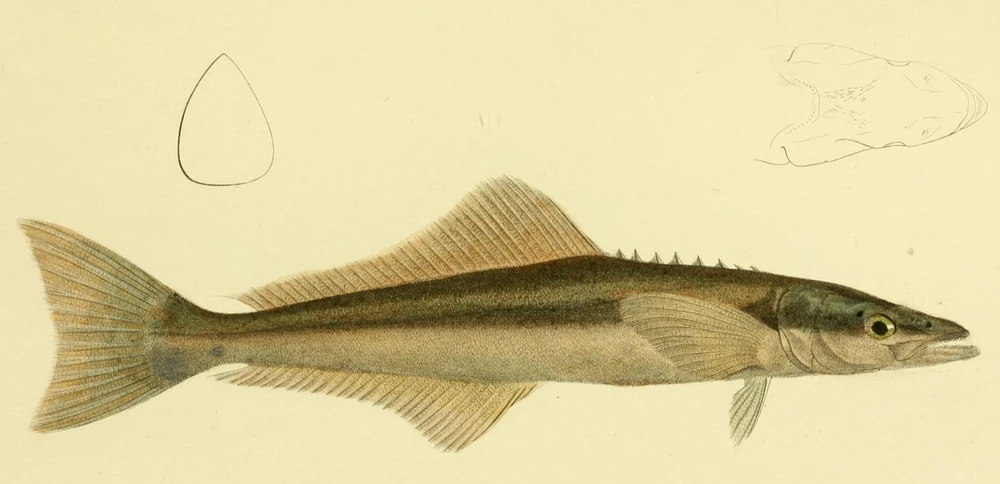
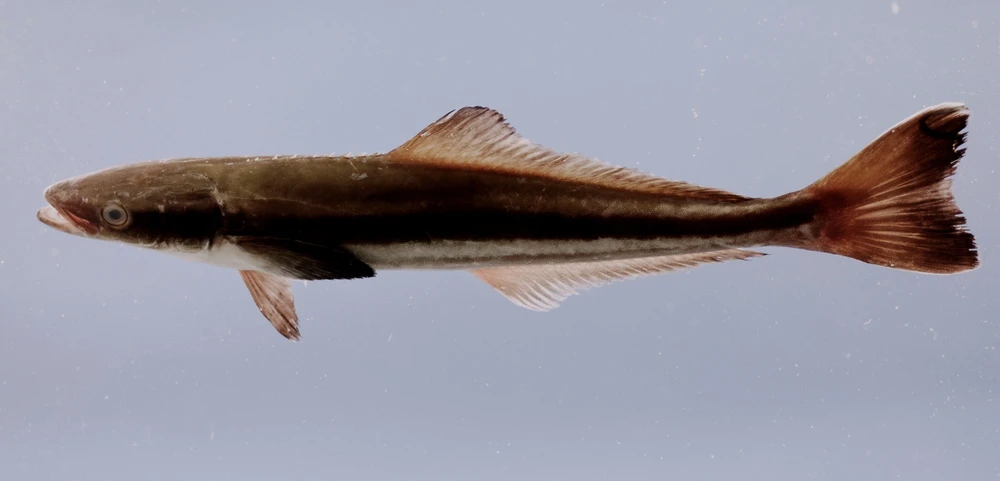
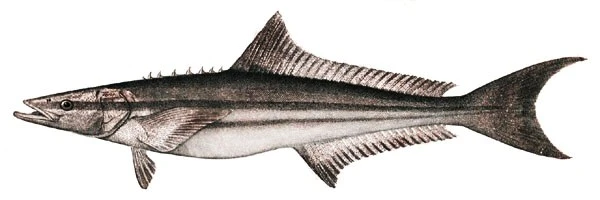
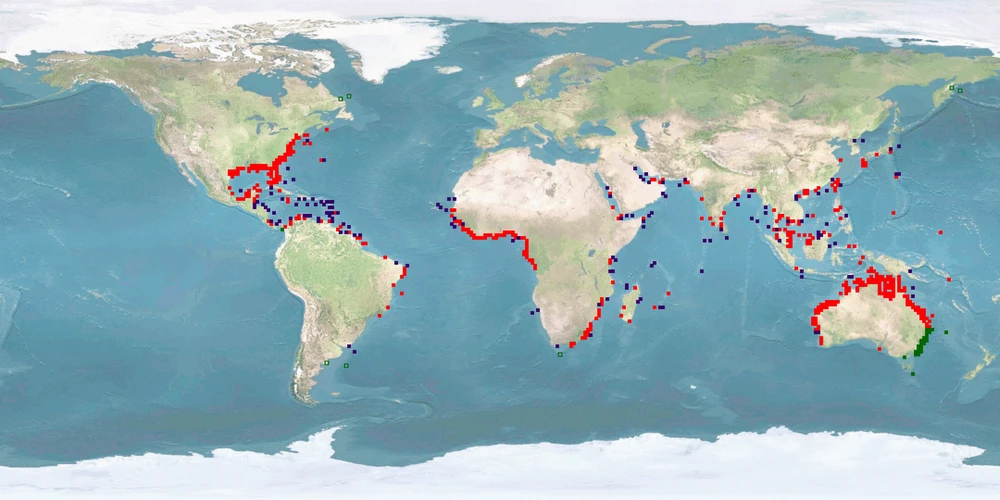




Lorem ipsum
Something along the lines of: we were aware of the importance of some topics so that we wanted to include them and collect data but not score them. For WelfareChecks | farm, these topics are "domestication level", "feed replacement", and "commercial relevance". The domestication and commercial relevance aspects allow us to analyse the questions whether increasing rate of domestication or relevance in farming worldwide goes hand in hand with better welfare; the feed replacement rather goes in the direction of added suffering for all those species which end up as feed. For a carnivorous species, to gain 1 kg of meat, you do not just kill this one individual but you have to take into account the meat that it was fed during its life in the form of fish meal and fish oil. In other words, carnivorous species (and to a degree also omnivorous ones) have a larger "fish in:fish out" ratio.
Lorem ipsum
Probably, we updated the profile. Check the version number in the head of the page. For more information on the version, see the FAQ about this. Why do we update profiles? Not just do we want to include new research that has come out, but we are continuously developing the database itself. For example, we changed the structure of entries in criteria or we added explanations for scores in the WelfareCheck | farm. And we are always refining our scoring rules.
The centre of the Overview is an array of criteria covering basic features and behaviours of the species. Each of this information comes from our literature search on the species. If we researched a full Dossier on the species, probably all criteria in the Overview will be covered and thus filled. This was our way to go when we first set up the database.
Because Dossiers are time consuming to research, we switched to focusing on WelfareChecks. These are much shorter profiles covering just 10 criteria we deemed important when it comes to behaviour and welfare in aquaculture (and lately fisheries, too). Also, WelfareChecks contain the assessment of the welfare potential of a species which has become the main feature of the fair-fish database over time. Because WelfareChecks do not cover as many criteria as a Dossier, we don't have the information to fill all blanks in the Overview, as this information is "not investigated by us yet".
Our long-term goal is to go back to researching Dossiers for all species covered in the fair-fish database once we set up WelfareChecks for each of them. If you would like to support us financially with this, please get in touch at ffdb@fair-fish.net
See the question "What does "not investigated by us yet" mean?". In short, if we have not had a look in the literature - or in other words, if we have not investigated a criterion - we cannot know the data. If we have already checked the literature on a criterion and could not find anything, it is "no data found yet". You spotted a "no data found yet" where you know data exists? Get in touch with us at ffdb@fair-fish.net!
Once you have clicked on "show details", the entry for a criterion will unfold and display the summarised information we collected from the scientific literature – complete with the reference(s).
As reference style we chose "Springer Humanities (numeric, brackets)" which presents itself in the database as a number in a grey box. Mouse over the box to see the reference; click on it to jump to the bibliography at the bottom of the page. But what does "[x]-[y]" refer to?
This is the way we mark secondary citations. In this case, we read reference "y", but not reference "x", and cite "x" as mentioned in "y". We try to avoid citing secondary references as best as possible and instead read the original source ourselves. Sometimes we have to resort to citing secondarily, though, when the original source is: a) very old or not (digitally) available for other reasons, b) in a language no one in the team understands. Seldomly, it also happens that we are running out of time on a profile and cannot afford to read the original. As mentioned, though, we try to avoid it, as citing mistakes may always happen (and we don't want to copy the mistake) and as misunderstandings may occur by interpreting the secondarily cited information incorrectly.
If you spot a secondary reference and would like to send us the original work, please contact us at ffdb@fair-fish.net
In general, we aim at giving a good representation of the literature published on the respective species and read as much as we can. We do have a time budget on each profile, though. This is around 80-100 hours for a WelfareCheck and around 300 hours for a Dossier. It might thus be that we simply did not come around to reading the paper.
It is also possible, though, that we did have to make a decision between several papers on the same topic. If there are too many papers on one issue than we manage to read in time, we have to select a sample. On certain topics that currently attract a lot of attention, it might be beneficial to opt for the more recent papers; on other topics, especially in basic research on behaviour in the wild, the older papers might be the go-to source.
And speaking of time: the paper you are missing from the profile might have come out after the profile was published. For the publication date, please check the head of the profile at "cite this profile". We currently update profiles every 6-7 years.
If your paper slipped through the cracks and you would like us to consider it, please get in touch at ffdb@fair-fish.net
This number, for example "C | 2.1 (2022-11-02)", contains 4 parts:
- "C" marks the appearance – the design level – of the profile part. In WelfareChecks | farm, appearance "C" is our most recent one with consistent age class and label (WILD, FARM, LAB) structure across all criteria.
- "2." marks the number of major releases within this appearance. Here, it is major release 2. Major releases include e.g. changes of the WelfareScore. Even if we just add one paper – if it changes the score for one or several criteria, we will mark this as a major update for the profile. With a change to a new appearance, the major release will be re-set to 1.
- ".1" marks the number of minor updates within this appearance. Here, it is minor update 1. With minor updates, we mean changes in formatting, grammar, orthography. It can also mean adding new papers, but if these papers only confirm the score and don't change it, it will be "minor" in our book. With a change to a new appearance, the minor update will be re-set to 0.
- "(2022-11-02)" is the date of the last change – be it the initial release of the part, a minor, or a major update. The nature of the changes you may find out in the changelog next to the version number.
If an Advice, for example, has an initial release date and then just a minor update date due to link corrections, it means that – apart from correcting links – the Advice has not been updated in a major way since its initial release. Please take this into account when consulting any part of the database.
Lorem ipsum
In the fair-fish database, when you have chosen a species (either by searching in the search bar or in the species tree), the landing page is an Overview, introducing the most important information to know about the species that we have come across during our literatures search, including common names, images, distribution, habitat and growth characteristics, swimming aspects, reproduction, social behaviour but also handling details. To dive deeper, visit the Dossier where we collect all available ethological findings (and more) on the most important aspects during the life course, both biologically and concerning the habitat. In contrast to the Overview, we present the findings in more detail citing the scientific references.
Depending on whether the species is farmed or wild caught, you will be interested in different branches of the database.
Farm branch
Founded in 2013, the farm branch of the fair-fish database focuses on farmed aquatic species.
Catch branch
Founded in 2022, the catch branch of the fair-fish database focuses on wild-caught aquatic species.
The heart of the farm branch of the fair-fish database is the welfare assessment – or WelfareCheck | farm – resulting in the WelfareScore | farm for each species. The WelfareCheck | farm is a condensed assessment of the species' likelihood and potential for good welfare in aquaculture, based on welfare-related findings for 10 crucial criteria (home range, depth range, migration, reproduction, aggregation, aggression, substrate, stress, malformations, slaughter).
For those species with a Dossier, we conclude to-be-preferred farming conditions in the Advice | farm. They are not meant to be as detailed as a rearing manual but instead, challenge current farming standards and often take the form of what not to do.
In parallel to farm, the main element of the catch branch of the fair-fish database is the welfare assessment – or WelfareCheck | catch – with the WelfareScore | catch for each species caught with a specific catching method. The WelfareCheck | catch, too, is a condensed assessment of the species' likelihood and potential for good welfare – or better yet avoidance of decrease of good welfare – this time in fisheries. We base this on findings on welfare hazards in 10 steps along the catching process (prospection, setting, catching, emersion, release from gear, bycatch avoidance, sorting, discarding, storing, slaughter).
In contrast to the farm profiles, in the catch branch we assess the welfare separately for each method that the focus species is caught with. In the case of a species exclusively caught with one method, there will be one WelfareCheck, whereas in other species, there will be as many WelfareChecks as there are methods to catch the species with.
Summarising our findings of all WelfareChecks | catch for one species in Advice | catch, we conclude which catching method is the least welfare threatening for this species and which changes to the gear or the catching process will potentially result in improvements of welfare.
Try mousing over the element you are interested in - oftentimes you will find explanations this way. If not, there will be FAQ on many of the sub-pages with answers to questions that apply to the respective sub-page. If your question is not among those, contact us at ffdb@fair-fish.net.
It's right here! We decided to re-name it to fair-fish database for several reasons. The database has grown beyond dealing purely with ethology, more towards welfare in general – and so much more. Also, the partners fair-fish and FishEthoGroup decided to re-organise their partnership. While maintaining our friendship, we also desire for greater independence. So, the name "fair-fish database" establishes it as a fair-fish endeavour.

